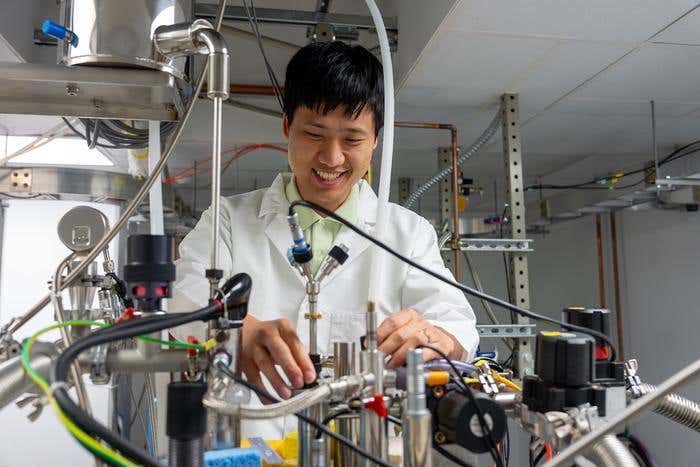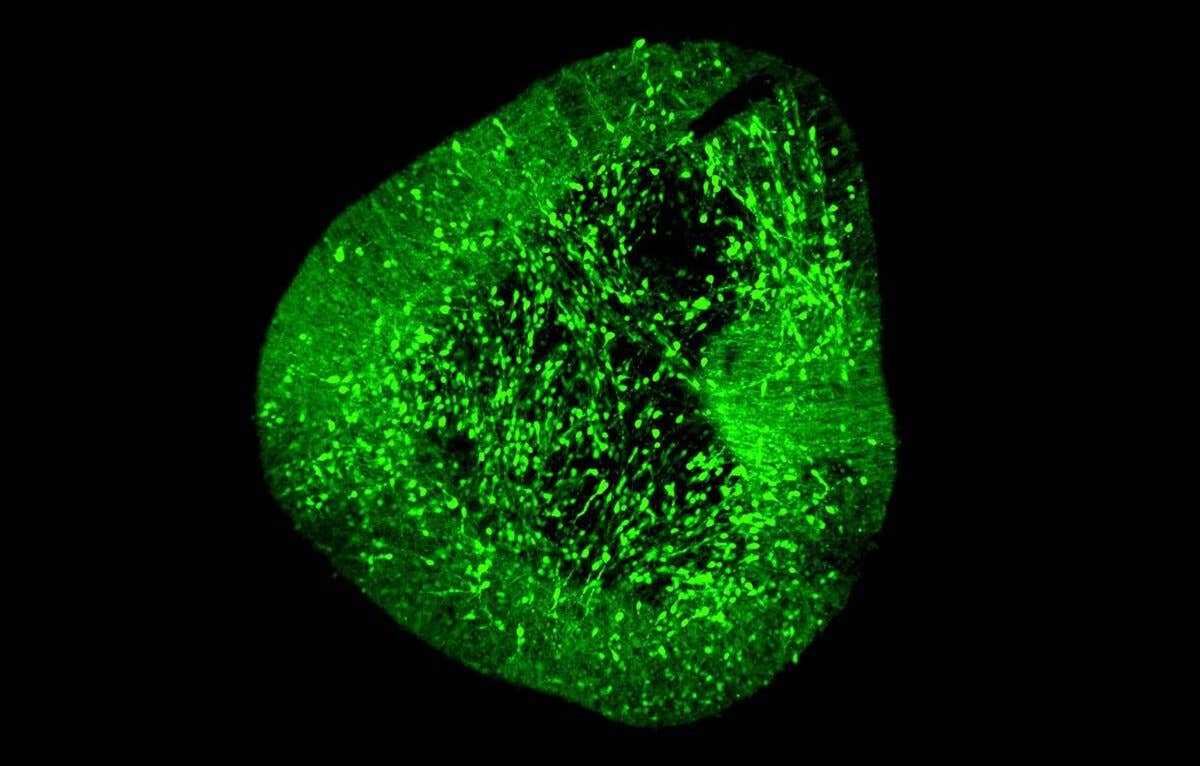New discovery reveals rare quantum event 50 years after it was first predicted
Scientists have observed the elusive superradiant phase transition, opening doors to quantum breakthroughs in computing and sensing.

Scientists have observed the elusive superradiant phase transition, opening doors to quantum breakthroughs in computing and sensing. (CREDIT: Science Advances)
In a supercooled lab setting, a tiny crystal has quietly flipped a half-century-old assumption on its head. Scientists at Rice University have reported the first direct observation of a long-predicted quantum event known as the superradiant phase transition, or SRPT. Though it sounds like something from science fiction, this rare event could help change the future of computers, sensors, and how we understand the universe itself.
SRPT happens when two quantum systems start to work together in perfect sync — without any push from the outside world. When it occurs, a material transforms into an entirely new phase of matter. It’s like water freezing into ice, but at the quantum level, and instead of cold being the trigger, it’s caused by internal magnetic communication between particles.
This phenomenon has been discussed in theory since the 1970s, but no one had ever seen it — until now.
The team conducted the experiment on a special crystal made from three elements: erbium, iron, and oxygen. This material was cooled to just 2 degrees above absolute zero, or minus 457 degrees Fahrenheit. Then it was placed under a magnetic field 100,000 times stronger than Earth’s.
Why so extreme? Because quantum effects often hide unless you strip everything else away — heat, movement, background noise. The researchers wanted a clear look.
Inside this frozen crystal, two different groups of atoms — erbium and iron — each had their own spin systems. In quantum physics, “spin” isn’t about rotation, but about the magnetic personality of particles. You can think of each one like a tiny magnet with an arrow pointing in a certain direction. When the arrows across many particles start to move in waves together, they form something called a magnon.
And that’s where the magic began.
“Originally, the SRPT was proposed as arising from interactions between quantum vacuum fluctuations — quantum light fields naturally existing even in completely empty space — and matter fluctuations,” explained lead author Dasom Kim, a doctoral student. “But in our work, we realized this transition by coupling two distinct magnetic subsystems — the spin fluctuations of iron ions and of erbium ions within the crystal.”
Related Stories
What made this study different is that it didn’t use light at all. Instead, it used magnons — waves of spin alignment — to create the transition.
The iron’s magnons played the role usually held by quantum light, and the erbium atoms represented the matter component. This twist allowed the scientists to sidestep a problem known in physics as the “no-go theorem,” which says SRPT shouldn’t happen in normal conditions due to a pesky energy-adding term in the math called the diamagnetic term. That term doesn’t exist in this crystal’s magnetic interactions — which opened the door to finally seeing SRPT happen.
To confirm that they really triggered SRPT, the team used high-tech spectroscopic tools that measure energy levels in materials. What they found matched perfectly with predictions.
One of the spin modes — or frequency signals — started to vanish. At the same time, the other mode showed a sharp bend or “kink” in its frequency behavior. This behavior is a classic sign that a material has entered a new quantum phase.
“We established an ultrastrong coupling between these two spin systems and successfully observed a SRPT, overcoming previous experimental constraints,” Kim said.
These shifts weren’t random. They mirrored what theorists had said should happen when a material transitions into the superradiant state. That gave the team high confidence they had finally witnessed this rare event.
The finding isn’t just exciting because of its scientific significance. It also offers real possibilities for future technology — especially in areas like quantum computing and sensing.
The most exciting potential comes from the quantum squeezing that happens near SRPT. Normally, quantum systems are noisy. Particles buzz and fluctuate because of the weird rules of quantum mechanics. But at the edge of this transition, the noise can be “squeezed” — meaning reduced in certain ways — while keeping important information intact.
“Near the quantum critical point of this transition, the system naturally stabilizes quantum-squeezed states — where quantum noise is drastically reduced — greatly enhancing measurement precision,” Kim explained. “Overall, this insight could revolutionize quantum sensors and computing technologies.”
Quantum sensors that use squeezed states could become far more sensitive to magnetic fields, gravity, or other forces. This might allow for better brain imaging, faster and more secure communications, or even precise navigation systems that don’t rely on GPS.
On the computing side, reduced noise means better stability for quantum bits, or qubits, which are the building blocks of quantum computers. These machines aim to solve problems regular computers can’t, and reducing quantum “fuzz” is a major step in making them more practical.
The math behind this experiment stems from a theoretical model called the Dicke model, which describes how a group of atoms can interact with a shared radiation field. This model has been a foundation in areas like quantum optics and information science. But until now, actually seeing the model in action during SRPT was thought to be impossible.
That’s because the diamagnetic term — a sort of energy penalty — normally blocks SRPT from happening. But with magnetic crystals like erbium-iron-oxide, that term disappears.
“Although the basic mathematical model was already laid out before, we needed to account for some of the specific magnetic properties of the material to obtain the precise results,” said graduate student Sohail Dasgupta, who helped build the model. “When your theory matches the experimental data — which happens rather rarely — it is the best feeling for a scientist.”
His mentor, physics professor Kaden Hazzard, said this work proves that ideas from quantum optics can be brought into solid materials. “This opens a new way to create and control phases of matter,” he said.
That possibility excites many researchers. If other materials can also enter this phase, it could lead to new discoveries and applications across many fields.
“Demonstrating a form of SRPT driven entirely by coupling two internal matter fluctuations marks a significant breakthrough in quantum physics,” said senior author Junichiro Kono. “It establishes a new framework for understanding and exploiting intrinsic quantum interactions within materials.”
Published in the journal, Science Advances, this study doesn’t just rewrite old physics — it builds a roadmap for new research. Scientists now know that SRPT can happen in systems made entirely from internal matter fluctuations, not just light-matter hybrids. That means future experiments can explore how to build more stable, more efficient quantum tools using magnetic materials.
Already, researchers are looking into how this transition might help create entangled quantum states, which are key to secure communication and advanced computation. The unique squeezing effects near SRPT may also lead to exotic ground states that are hard to reach in other ways.
And because the crystal used in this study belongs to a wider group of materials, others like it might show similar behaviors. This opens up a whole new family of substances for quantum exploration.
One thing is clear: after fifty years of theory and debate, SRPT is no longer just an idea. It’s a real, observable phase — and it might help power the next generation of quantum devices.
Note: The article above provided above by The Brighter Side of News.
Like these kind of feel good stories? Get The Brighter Side of News' newsletter.



